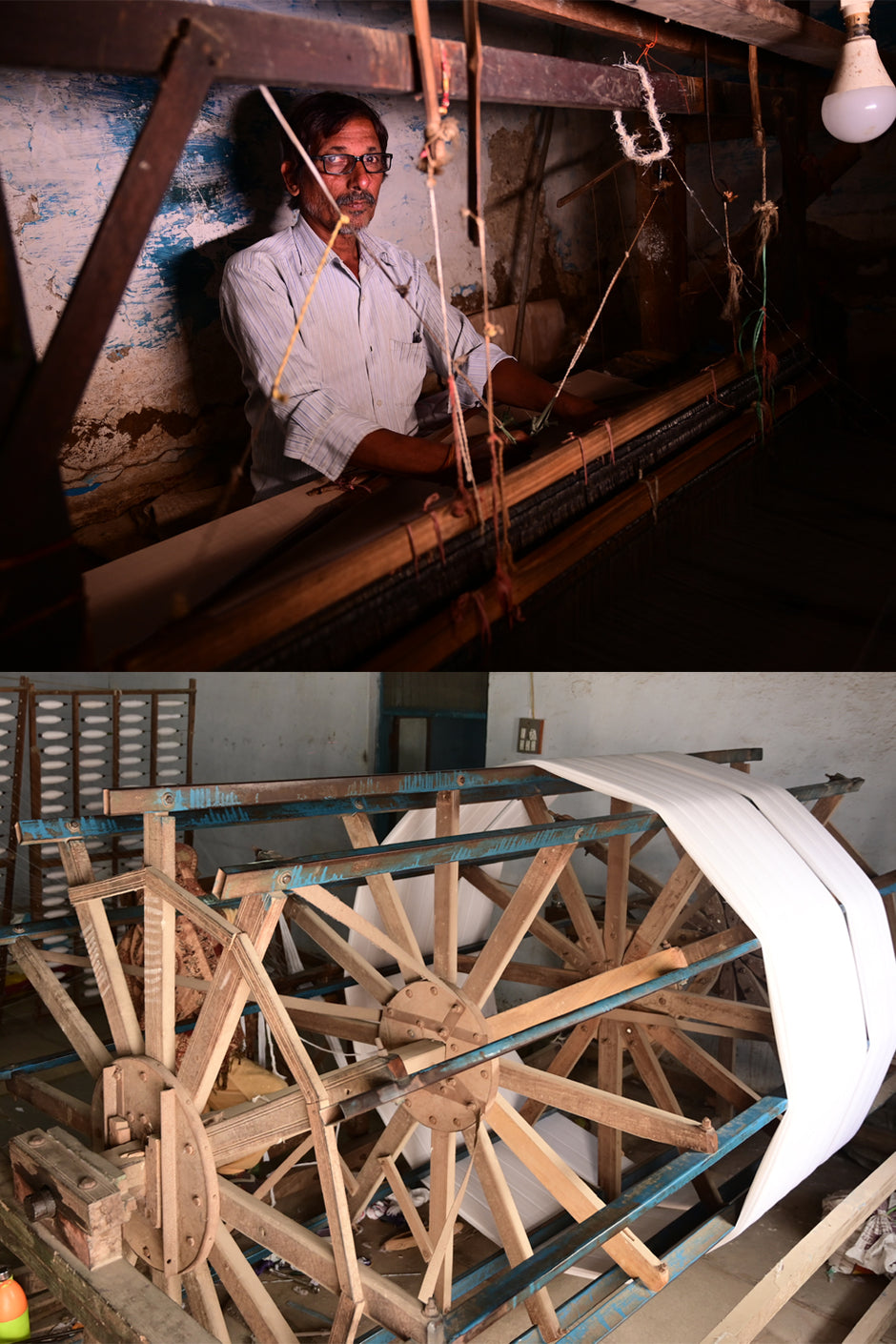
Handloom
Handloom weaving is one of India’s oldest and most meaningful crafts—threads worked slowly by hand into cloth, carrying with them a rhythm as old as our villages. For generations, weaving has been more than an art—it has been a lifeline. For many farming families, handloom is their second source of income, helping them sustain themselves through uncertain crop seasons and the challenges of rural life.
With the arrival of machines during the colonial era, handloom gradually lost its place of value. The speed of industry overshadowed the slowness of the loom, and what was once sacred began to diminish in people’s eyes. Yet, in countless villages, the loom never stopped humming—its threads still tied to the dignity and survival of the weaver.
At Cotton India Tribe, we work directly with handloom sansthas and weaving clusters across India, sourcing cloth straight from the hands of artisans. Every fabric we use carries not only texture and beauty, but also the resilience of the farmer-weaver community it comes from.
When you choose handloom, you choose continuity—of craft, of livelihood, and of a tradition that holds both heritage and hope.
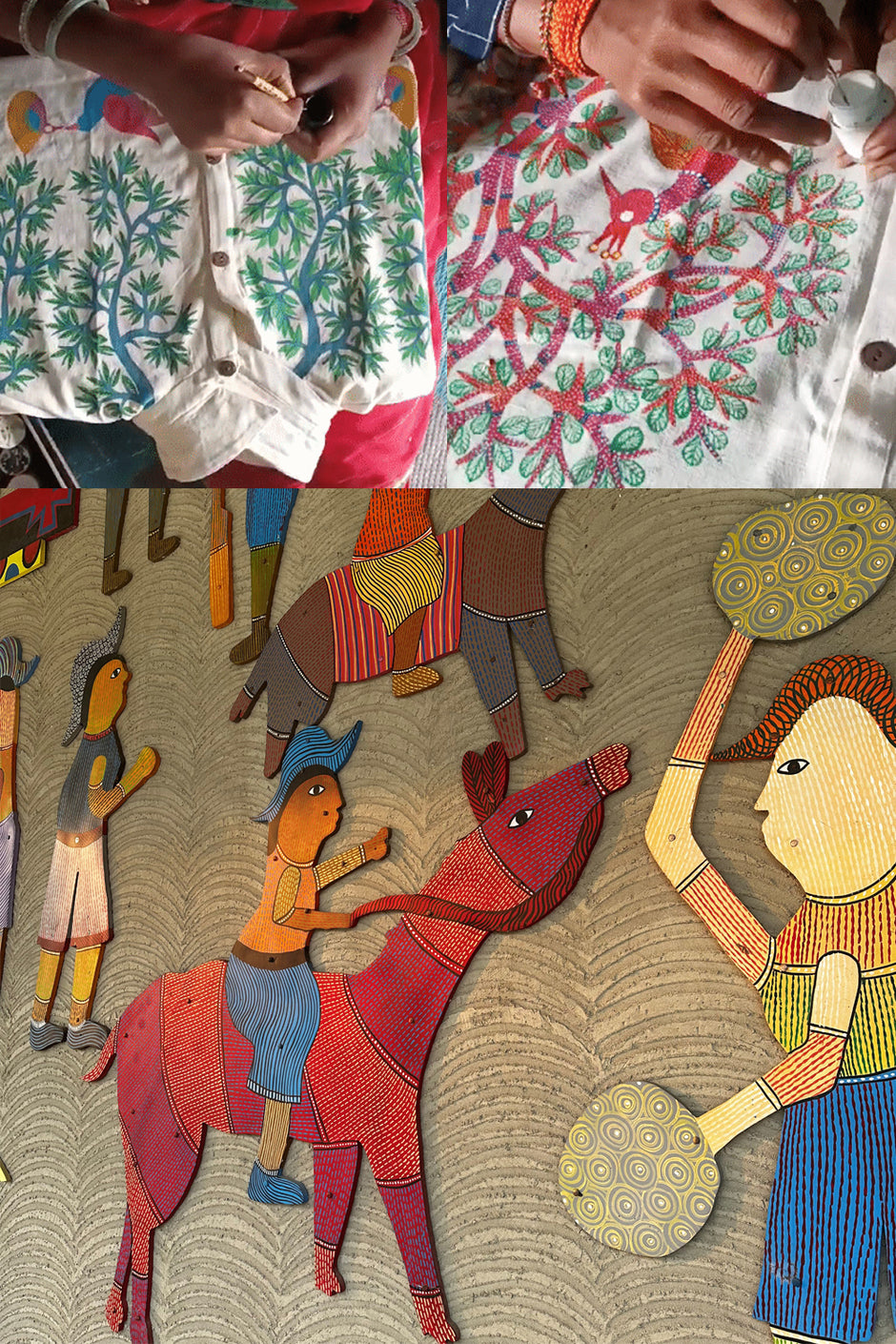
Gond Art
Gond art is one of India’s most treasured tribal art forms, born from the Gond community’s deep connection with nature, mythology, and storytelling. Using intricate lines, dots, and bold colors, it transforms everyday life and ancestral tales into living works of art. Traditionally painted on mud walls and village homes, it has always been a way for the community to celebrate, protect, and remember.
At Cotton India Tribe, we carry this legacy forward through one-of-a-kind hand-painted shirts on raw handloom cloth. Each shirt is a canvas, no two ever alike, created directly by Gond artists. By bringing their art into fashion, we not only celebrate its beauty but also ensure that the artists can continue their craft within their villages—sustaining their roots, traditions, and livelihoods without uprooting their lives.
Wearing Gond art is not just wearing fashion—it is carrying a story, a culture, and the hand of its maker with you.
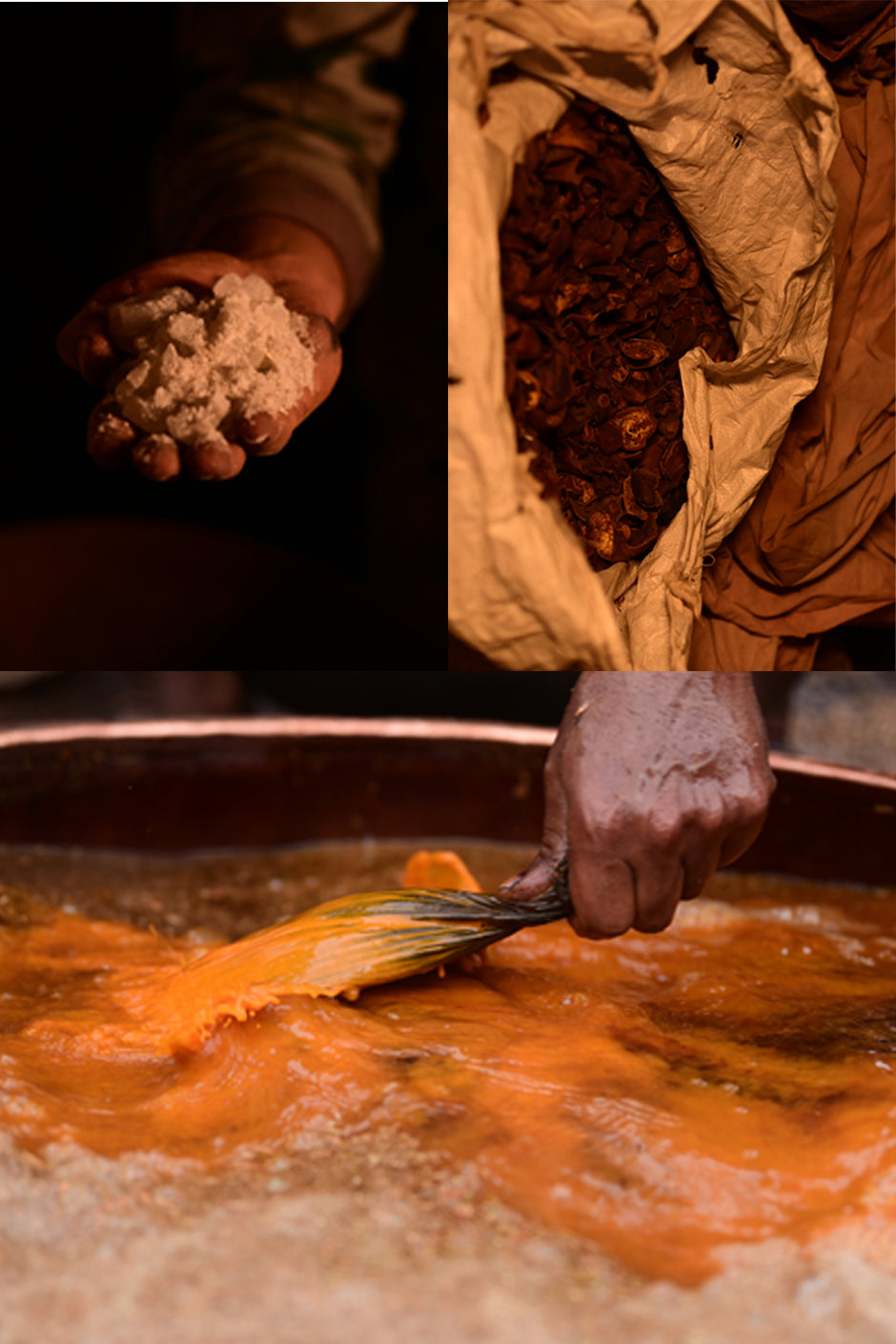
Natural Dyes
Natural dyeing is one of the oldest ways of bringing color to cloth—using earth, plants, and minerals to create hues that feel alive. In India, this knowledge has been passed down quietly through generations, where every color has a root in nature: rust from iron, yellow from Harad, depth from alum, and countless shades drawn from leaves, flowers, and bark.
What makes natural dyeing remarkable is its simplicity and ingenuity. Much like cooking, it comes from the rhythms of everyday life—sometimes it is the turmeric or pomegranate from our kitchen that gives color, and sometimes it is the same ingredients that help correct a misprint. For every need, nature has always held an answer.
At Cotton India Tribe, we turn to these traditions to create cloth that carries not just beauty but also integrity—colors that breathe, age gracefully, and remain tied to the land they come from. Every naturally dyed fabric is a reminder that the earth already provides everything we need, if only we choose to honor it.
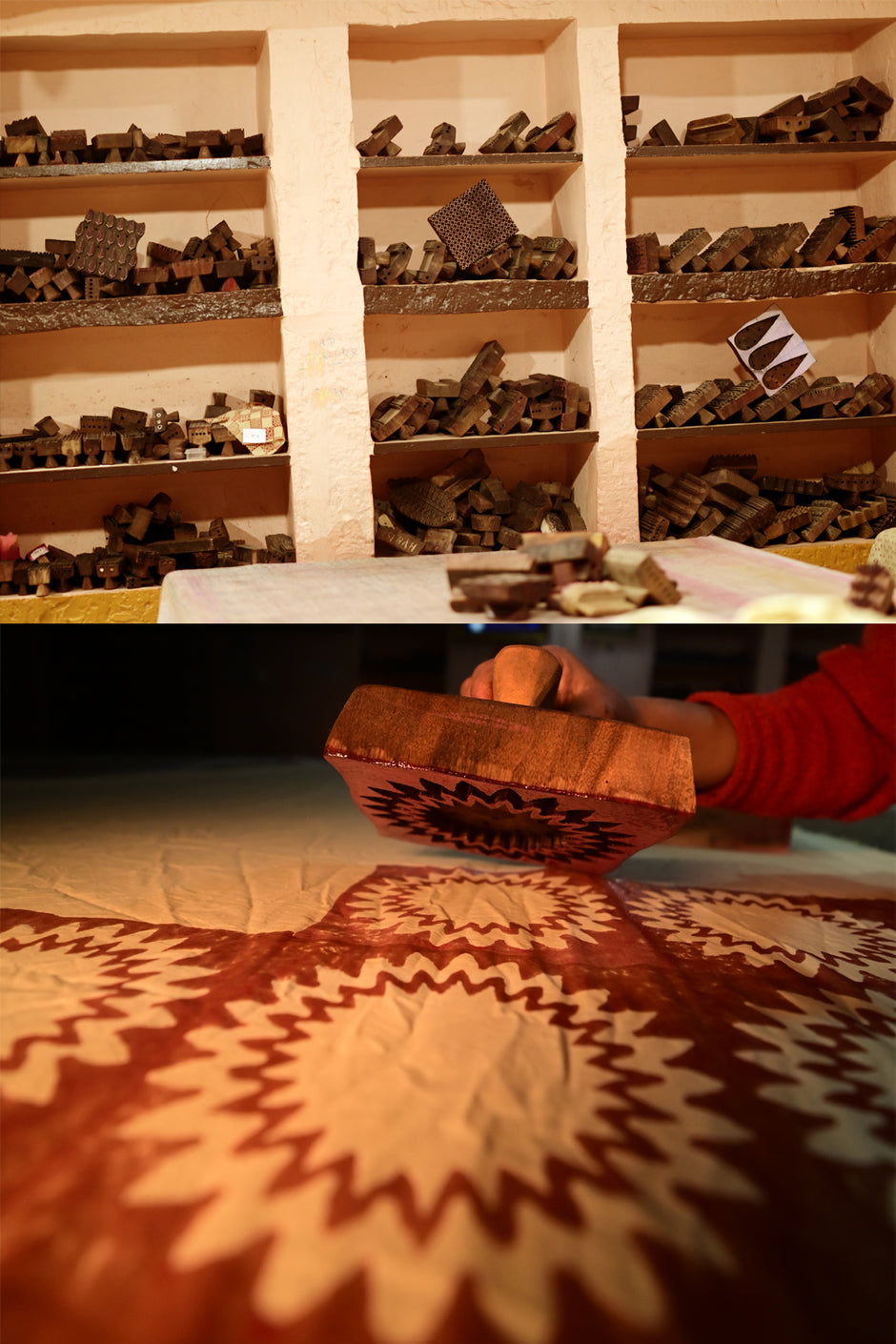
Block Printing
Block printing is one of India’s most enduring textile traditions—where carved wooden blocks are dipped in dye and pressed by hand onto cloth, imprinting rhythm, repetition, and story. What is remarkable is how, across regions, the essence has remained the same while the styles have blossomed into their own unique languages.
From the geometric finesse of Bagh, to the bold florals of Ajrakh, to the earthy vibrancy of Bagru—each region has nurtured its own identity, yet all are bound by the same principle: a wooden block, natural dye, and the patience of human hands. This unity of method and diversity of expression is what makes block printing not just a craft, but a shared cultural heritage that stretches across centuries and landscapes.
At Cotton India Tribe, we work with master printers and artisan clusters across India, sourcing directly from the hands that carry this knowledge. Each print on our cloth is more than a pattern—it is continuity, ingenuity, and the rooted creativity of communities who have kept this tradition alive despite changing times.
When you wear block print, you wear a piece of India’s geography and history, pressed gently into fabric by time-honored hands.
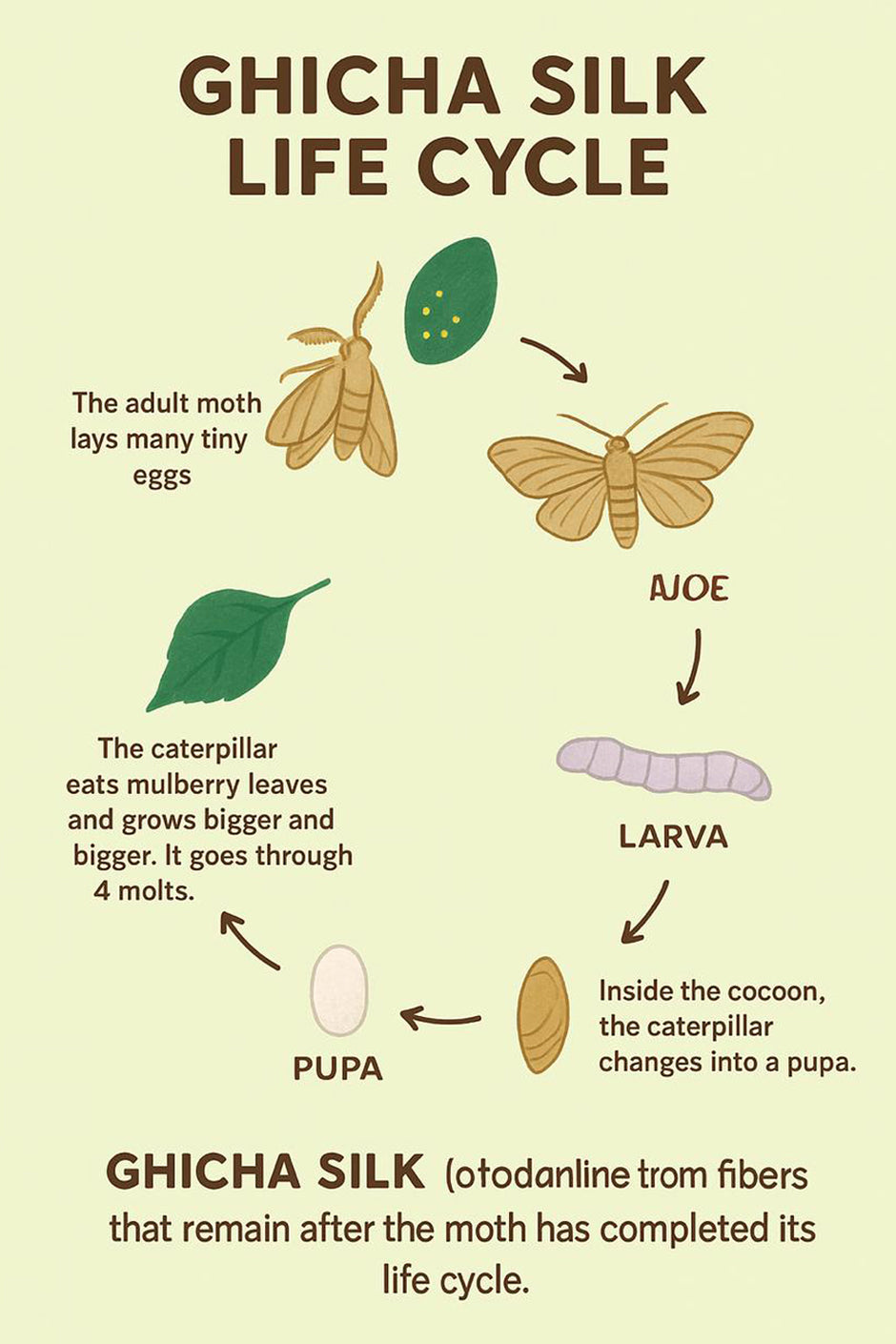
Peace Silk
Silk has always been a symbol of grace in India, yet its making has often carried unseen sacrifice. Peace silk, also known as ahimsa silk, is different—it is drawn without harm, allowing the silkworm to complete its life cycle before the threads are collected. In this way, the cloth carries both beauty and compassion.
We work with Ghicha silk, a form of peace silk known for its textured, slub-like finish. The yarns are gathered from the cocoons after the moths have flown, giving the fabric its raw, irregular character—alive with movement and depth. Every weave of Ghicha silk celebrates not only the elegance of silk, but also the value of life itself.
At Cotton India Tribe, we use Ghicha silk to create fabrics and furnishings that honor both the earth and the beings we share it with. It is silk that shines quietly—sacred, imperfect, and kind.
At Cotton India Tribe, ethics begins with how we create—respecting the artisan, the craft, and the earth. We work directly with clusters across India, sustaining livelihoods in villages so communities can thrive without uprooting their lives.
Every material we use is natural fibre, dyed with plant-based or mineral colors that honor the earth’s rhythm. Nothing is wasted—every off-cut, even the tiniest scrap, is reused, finding its place in smaller products, quilting, or new weaves. This way, every thread is valued.
We choose slowness over speed, creating timeless, one-of-a-kind pieces that last and carry meaning. For us, ethical practice is simple: people, planet, and craft first. Always.
“Natural fibres, natural colors, no waste. Every hand, every thread, respected.”

